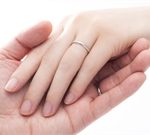
After months of delay, the Trump Administration is expected to announce this week that it will ban mint-, fruit- and dessert-flavored e-cigarette cartridges, while allowing the continued sale of menthol- and tobacco-flavored vapes. The White House originally proposed a ban on flavored e-cigarettes — thought to be especially enticing to teens — back in September. But since then, the Administration had seemed to bow to industry and political pressures and back away from such a ban. As reported Tuesday by The New York Times, the new ban would have one important exception: Flavored liquid nicotine used in “open tank systems” will not be outlawed. That’s seen as a concession to the burgeoning vape shop business. Trump also hinted that the ban might not last long. “We think we are going to get back in the market very, very quickly,” he said at a New Year’s Eve news conference, held during a party at his Mar-a-Lago resort, the Times reported. “We have a very big industry. We’re going to take care of the industry.” Health advocates supported the ban, but said the exclusion of menthol could greatly weaken its effect. “The administration policy will fall well short of what is necessary to address this growing epidemic,” said Nancy Brown, CEO of the American Heart Association. “By allowing menthol flavors and flavored liquid nicotine used in open… read on >















